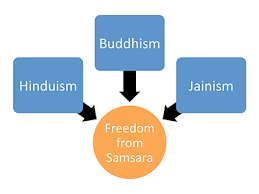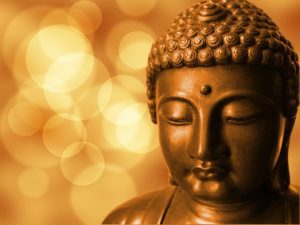Ancient India: Hinduism, Buddhism and Jainism – NCERT texts are a must-read for every UPSC aspirant and are available for free download from ncert.nic.in website. Almost every UPSC topper has repeated the importance of reading NCERT school texts. These are texts which help to build the fundamentals. In this article, we will be dealing with the important points filtered out from NCERT school text for Standard 6 History. We plan to cover the main points from NCERT texts for different classes and subjects in our future posts.
The reference material for this post is NCERT History text for Class 6 (Our past -1). Only the main points from each chapter is compiled below. Our advice is to first go through the respective NCERT text and use this compilation then for quick revision.
New Questions and Ideas
- Due to Mahajanapadas, cities were flourishing and lifestyles were changing in villages.
- Now here, many thinkers were trying to understand these changes in society. They want to know true meaning of life
BUDDHA
- Buddha belonged to a small gana known as the Sakya gana, and was a kshatriya.
- He finally decided to find his own path to realisation, and meditated for days under a peepal tree at Bodh Gaya in Bihar, where he attained enlightenment. After that, he was known as the Buddha or the Wise One.
- Sarnath, near Varanasi, where he taught for the first time.
- He passed away at Kusinara.
- The Buddha taught that life is full of suffering and unhappiness. This is caused because we have cravings and desires.
- The Buddha described this as thirst or tanha. He taught that this constant craving could be removed by following moderation in everything.
- He also taught people to be kind, and to respect the lives of others, including animals.
- He believed that the results of our actions (called karma), whether good or bad, affect us both in this life and the next.
- Taught in the language of the ordinary people, Prakrit.
- He also encouraged people to think for themselves.
- After the death of Buddha, different Buddhist Councils were conveyed to discuss Buddhist doctrines.
UPANISHADS
- Same time or perhaps earlier than Buddha, other thinkers also tried to find answers to difficult questions like “life after death”, performing of “ritual sacrifices ” etc.
- There were something permanent that last even after death. They named it atman or the individual soul and the brahman or universal soul.
- They believed that ultimately, both the atman and the brahman were one.
- Many of their ideas were recorded in the Upanishads. These were part of the later Vedic texts.
- Recorded texts contain conversation between teachers and students, through simple dialogues.
JAINISM
- Most famous thinker of the Jainas, Vardhamana Mahavira was a contemporary of Buddha.
- He was a kshatriya prince of the Lichchhavis, a group that was part of the Vajji sangha.
- He taught a simple doctrine: men and women who wished to know the truth must leave their homes.
- They must follow very strictly the rules of ahimsa, which means not hurting or killing living beings.
- It was very difficult for most men and women to follow these strict rules like remain nude or maitaining celibacy eg: farmers find it difficult to follow because they cant weed out insects.
- Ordinary people could understand the teachings because in Prakrit language.
- Jainism was supported mainly by traders.
THE SANGHA
- Both the Mahavira and the Buddha felt that only those who left their homes could gain true knowledge. They arranged for them to stay together in the sangha, an association of those who left their homes.
- The rules made for the Buddhist sangha were written down in a book called the Vinaya Pitaka.
- Men and women who joined the sangha led simple lives.
- Those who joined the sangha included brahmins, kshatriyas, merchants, labourers, barbers, courtesans, children and slaves.
MONASTERIES
- The only time both Buddhists and Jainists stayed in one place was during the rainy season, when it was very difficult to travel.
- These shelters were called viharas.
- The earliest viharas were made of wood, and then of brick. Some were even in caves that were dug out in hills, especially in western India.
SYSTEM OF ASHRAMAS
- Same time of Buddha and Jain, brahmins developed this ashramas.
- It is used as for a stage of life instead of people live and meditate.
- Four ashramas were recognised: brahmacharya, grihastha, vanaprastha and samnyasa.
- Generally, women were not allowed to study the Vedas, and they had to follow the ashramas chosen by their husbands.





